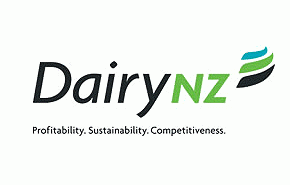
Content supplied by DairyNZ
Industry body DairyNZ is calling on the Board of Inquiry into the Ruataniwha Dam proposal to direct the Hawke’s Bay Regional Council to set a nitrogen limit through a plan change process.
DairyNZ’s senior policy advisor Oliver Parsons says that’s the best way to achieve the intent of the Board’s decision.
"This has been outlined in DairyNZ’s comments on the draft decision, due today."
"We support the Board’s vision for sustainable growth within sound environmental bottom lines. But from an implementation perspective, it is clear that parts of the draft decision would make this impossible."
“Instead of sustainable growth, the draft decision would require a 40 percent claw-back on existing rural production. In a community that has already suffered from years of economic decline and is stretched to the limit, that just doesn’t make sense and goes against the purpose of the Resource Management Act," says Oliver.
"We agree with the Board’s statement that a more detailed analysis of dissolved inorganic nitrogen might justify a different limit," he says. "So let’s do that analysis and do it well."
The Board can direct the limit to be set immediately through a focused plan change process led by the council. This would give the community and everyone involved the opportunity for much more detailed examination of the evidence, more transparency and more community participation, he says.
Oliver says the Tukituki Catchment Proposal involved 28,000 pages of evidence covering 18 resource consents and the full suite of environmental rules.
"That meant that there was not enough time to cover a lot of the water quality evidence. Even the short hearings process was enough for NIWA, the Cawthron Institute and regional council scientists to raise major concerns about the approach used to justify the draft limit," he says.
"The Board was left relying on data from a different river, that has never been peer-reviewed or published and has a total lack of rigour or transparency," he says.
"We owe it to the community to put together a plan that can be fully implemented. The future of Central Hawke’s Bay is too important to leave up to science that has never been tested. The risk of getting it wrong is too great."
3 Comments
This does not sound like ,my home to me
In a community that has already suffered from years of economic decline and is stretched to the limit
Our towns have suffered just like every other small town in rural NZ. Our community has some large welathy farmers and a few smaller struggling ones. Some large dairy farms who employe filipinoes rather than locals and are heavily indebted.
The problem is costs, talked to a local farmer renting 400 acres. Pays $130 an acre to rent but also $12000 in rates. Looking at walking. But also other friends in the South Island struggling on debt free farms due to the high cost structure.
Waipukurau lost a big employer when the local boning plant closed. Last year a %50 reduction in boned sheep meat exported and a %50 increase in whole carcass exports to China explains the problem.
The biggest issue facing rural NZ is debt and interest paid to foreign owned banks they are impoverishing our communities. So the problems rank more like this, High costs often government, then high debts and interest leaving the community.
I didn't lose money in the drought, I managed to buy stock back in at very favorable prices as did most of my friends. Water would have enabled me to carry stock longer and face a bigger loss and I would have been left with a substantial water cost for doing it.
People in the area are starting to lose trust in the HB Reginal council and who can blame them.
I ask is the fishing industry any different, processed off shore, often profits made in tax havens, pay to fishermen as little as you can get away with.
I hope people in East Coast drought prone areas are making serious contingency plans for this year before they are caught up in the stress of the moment. The El Niño readings are looking pretty bad indeed at the moment (maybe worse than '97). It could get very rough.
http://www.livescience.com/45624-el-nino-developing-photo.html
We don't always get droughts on the East coast in an EL Nino event, appears to me to be erratic.
I farm a lot of bigger cattle I can kill if it drys off, as do most farmers now. East coast has always be drought prone. The HB coastal country has had a rough few years. Most of the farmers in the planned irrigation zone will have done better than average.
We welcome your comments below. If you are not already registered, please register to comment
Remember we welcome robust, respectful and insightful debate. We don't welcome abusive or defamatory comments and will de-register those repeatedly making such comments. Our current comment policy is here.